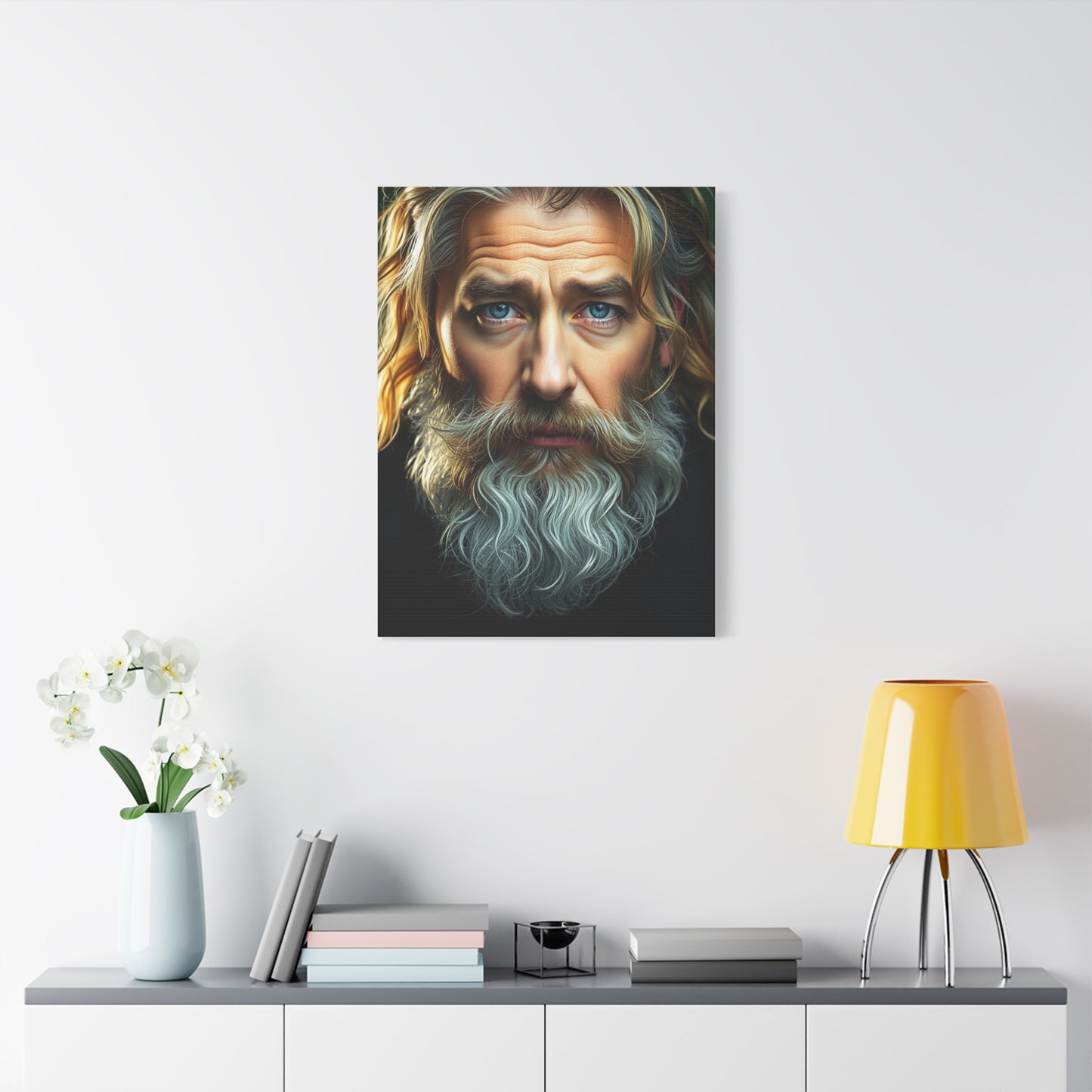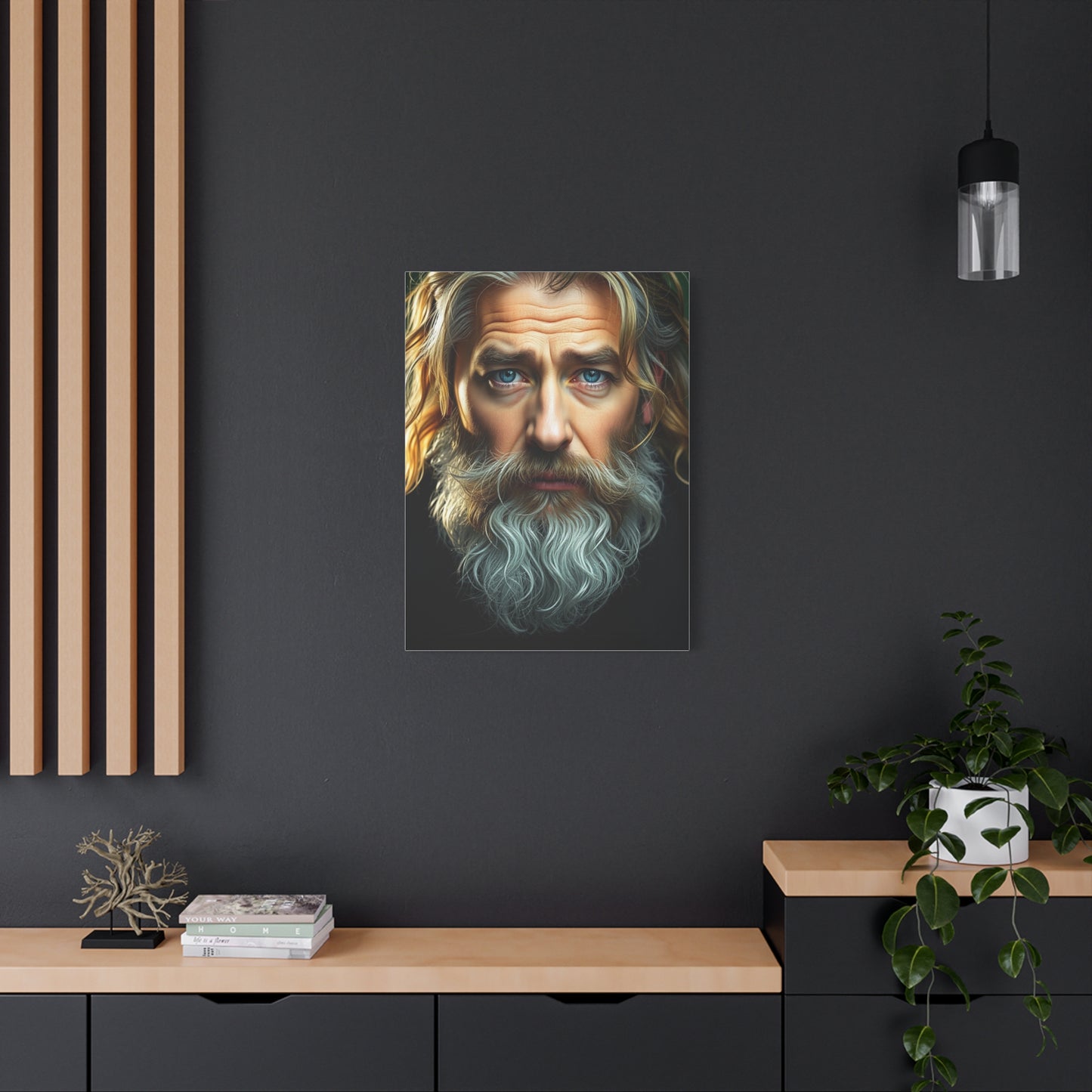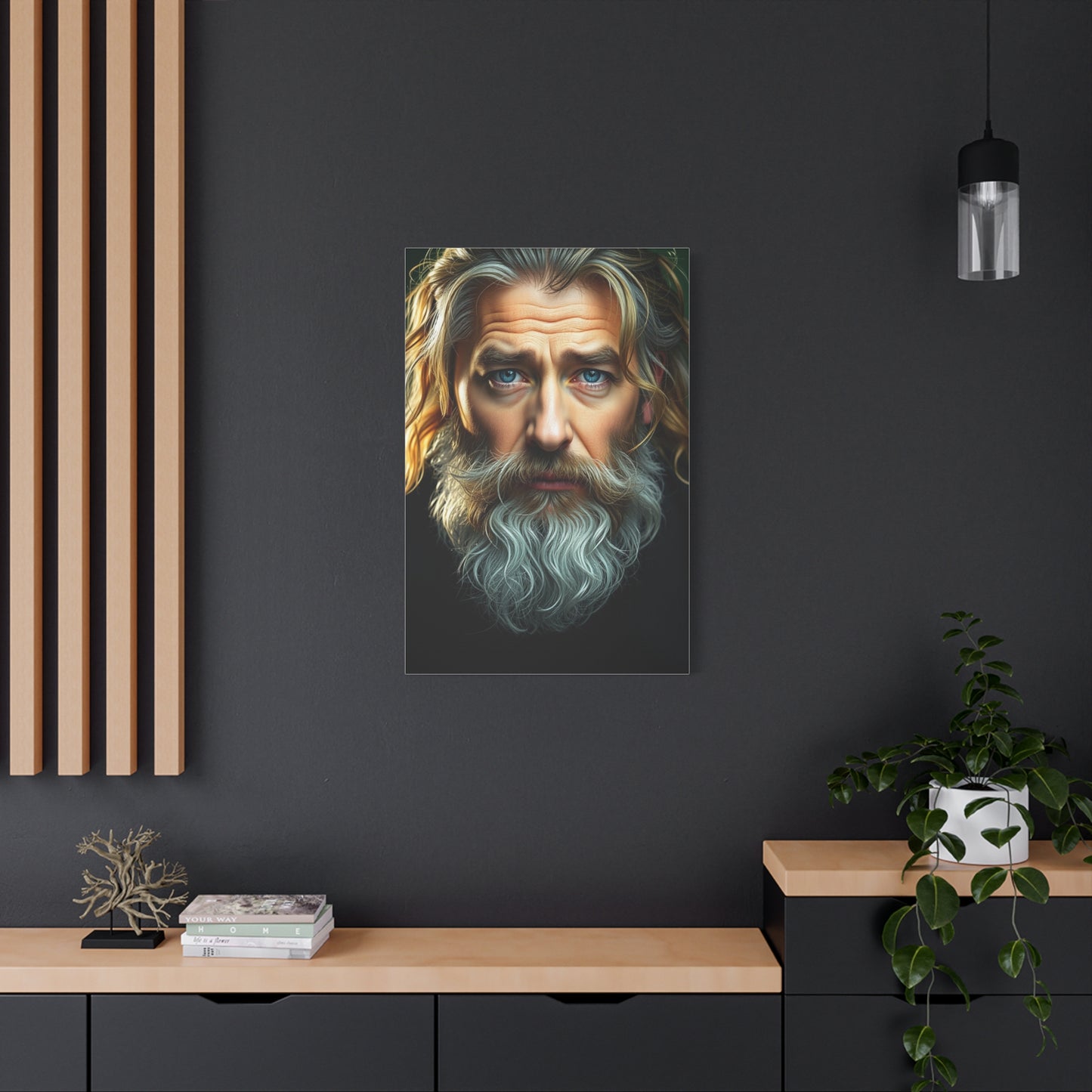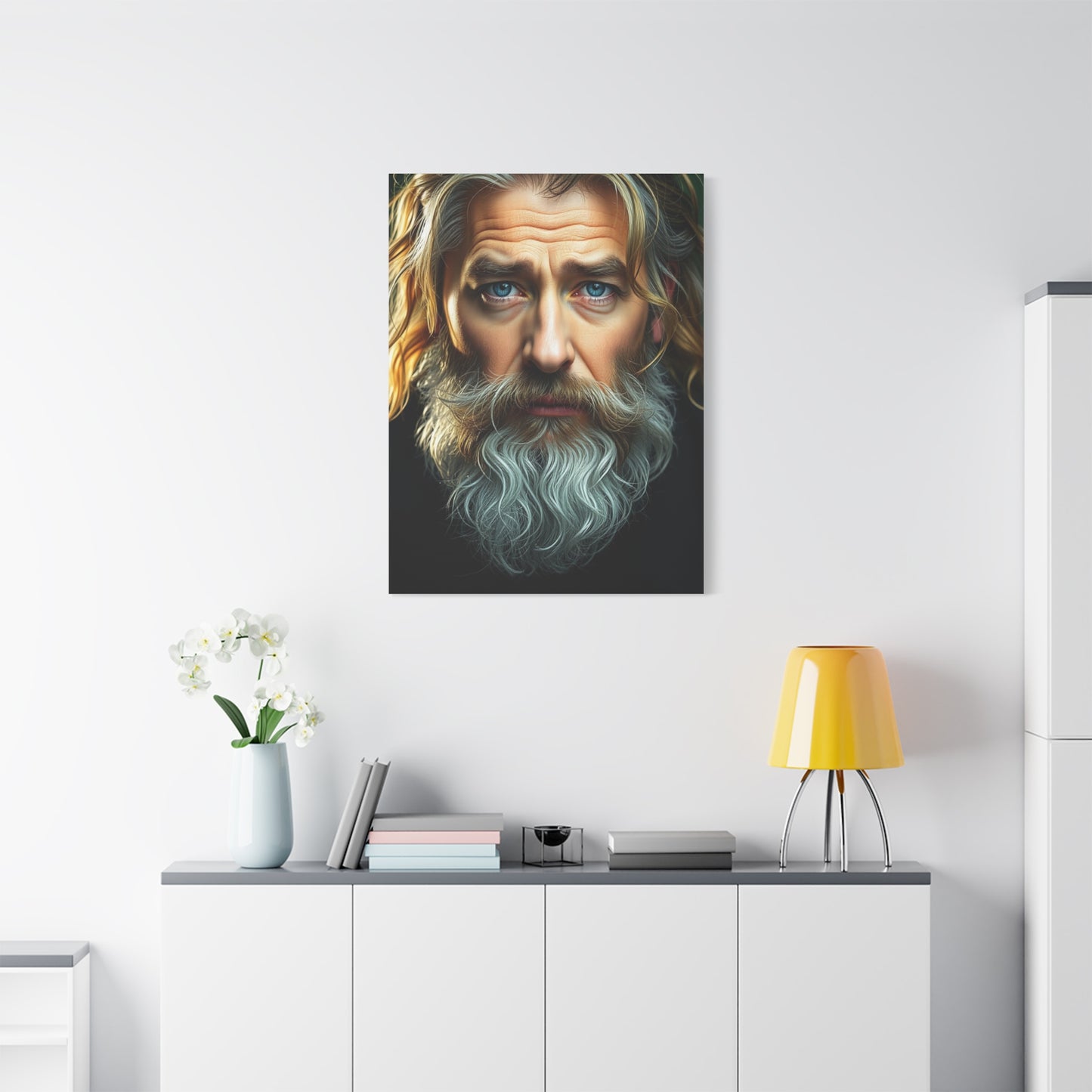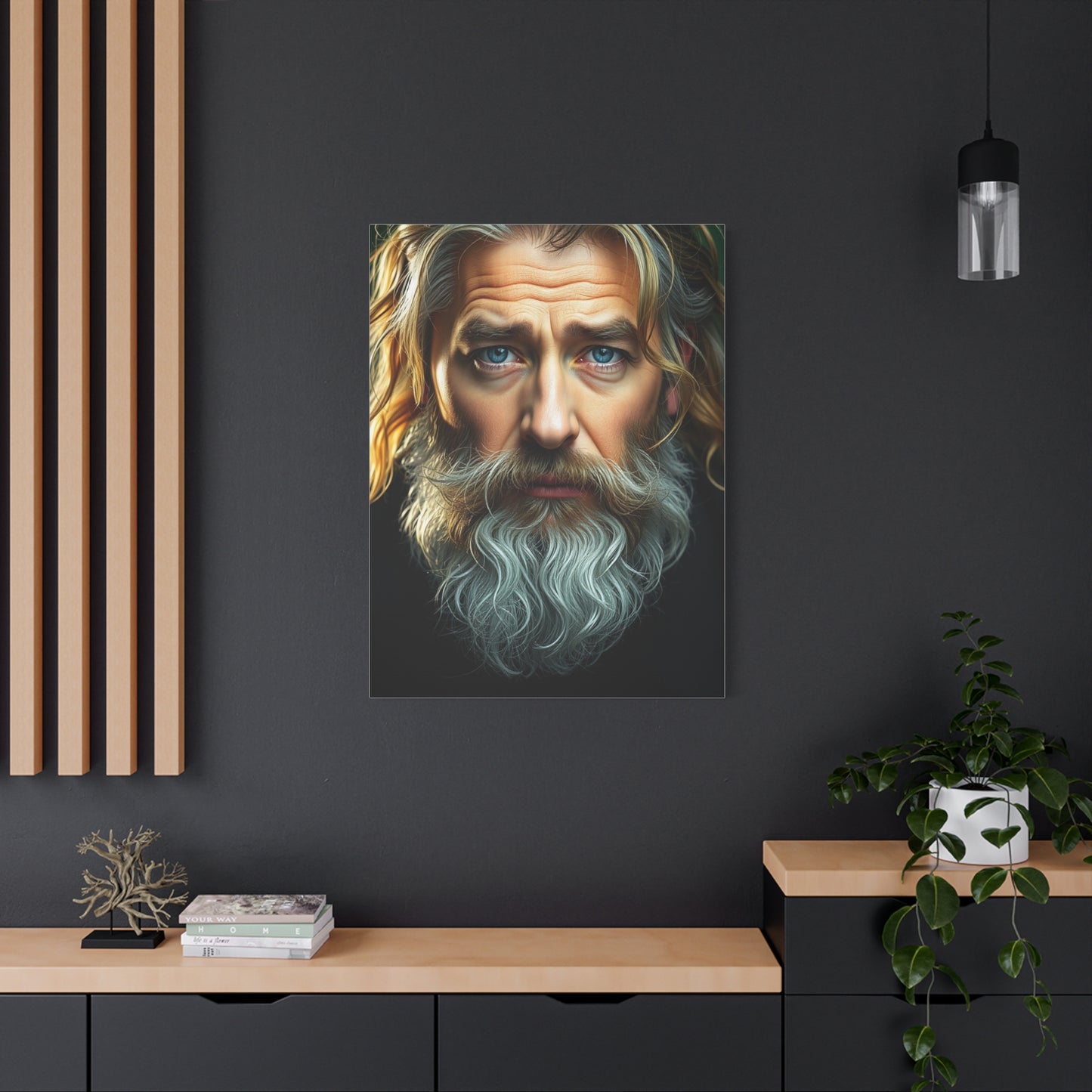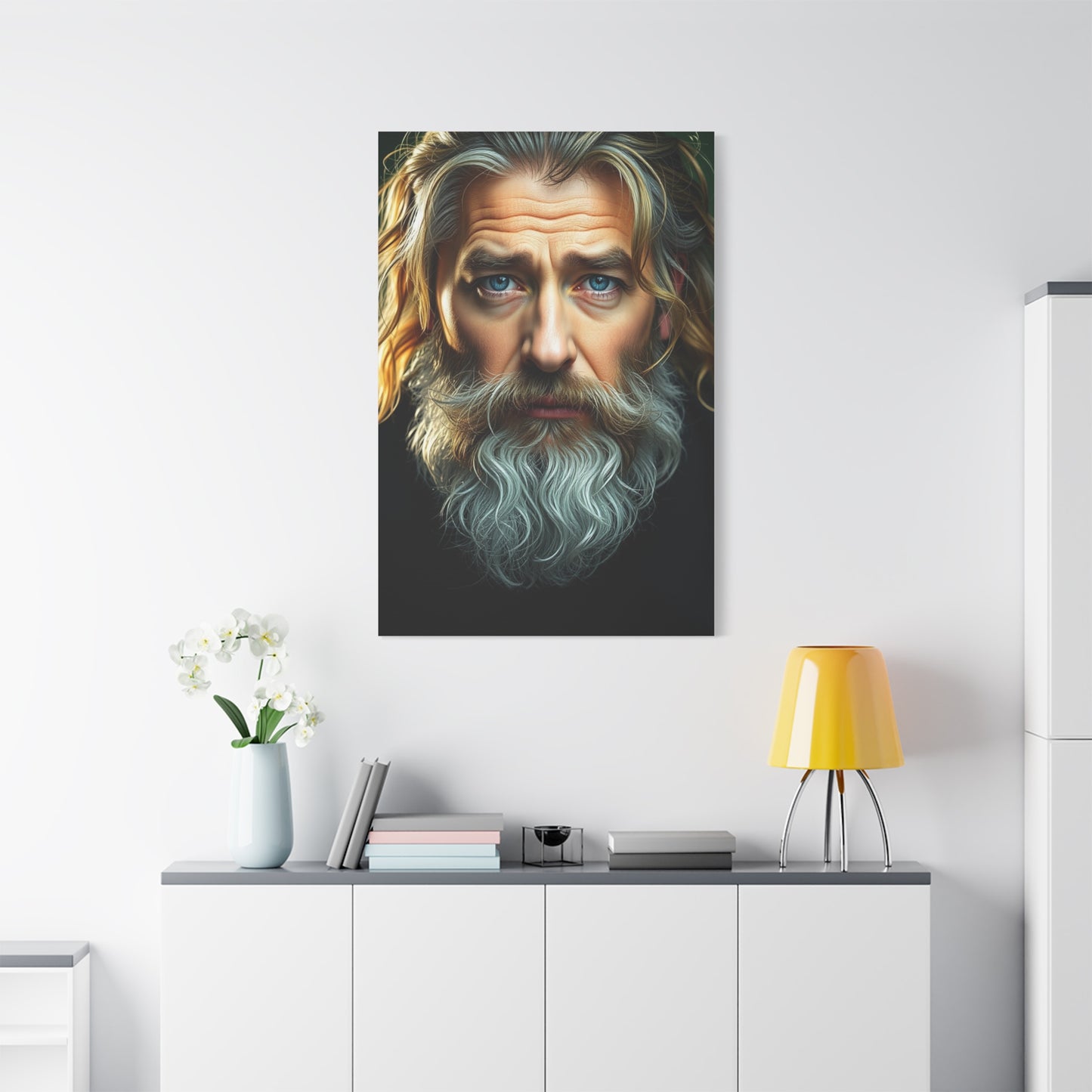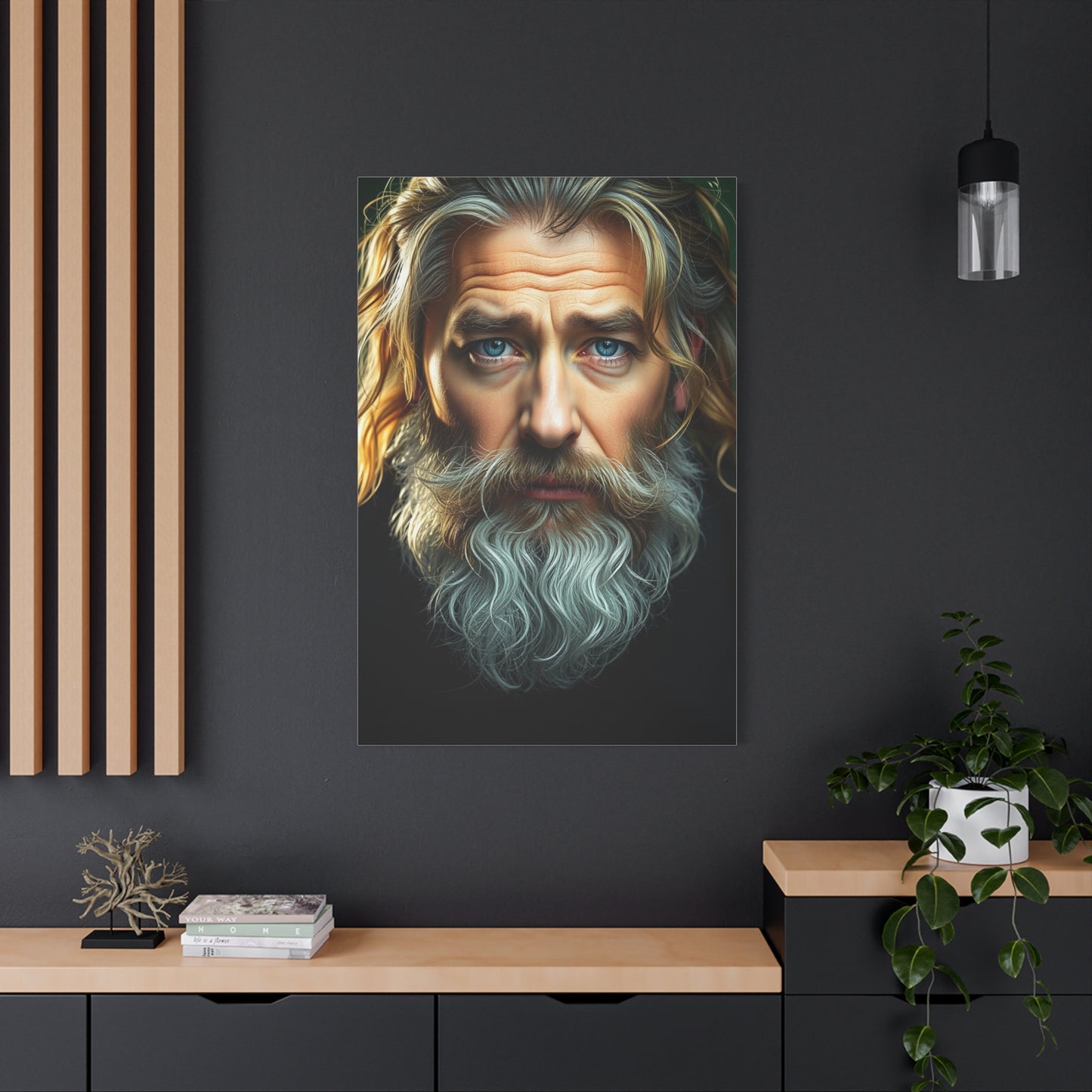Subtle Hues, Striking Impact: Decorating with Celadon Elegance Wall Art
The world of interior design has witnessed countless trends come and go, but certain color palettes possess an enduring quality that transcends temporary fashions. Celadon represents one such timeless hue that has captivated designers and homeowners for centuries. This delicate shade of pale green, reminiscent of ancient Chinese pottery glazes, brings a sense of tranquility and sophistication to any living environment. The term itself derives from a character in a French pastoral play who wore ribbons of this distinctive greenish hue, and the color has since become synonymous with refined taste and elegant simplicity.
When incorporated into canvas wall art, celadon tones create visual interest without overwhelming the senses. This subtle green possesses remarkable versatility, working harmoniously with various design aesthetics from traditional to contemporary. The color's natural association with growth, renewal, and harmony makes it particularly appealing for creating peaceful home environments. Unlike bolder color choices that might dominate a room's atmosphere, celadon provides a gentle backdrop that allows other design elements to shine while maintaining its own distinctive presence.
The psychological impact of celadon cannot be overstated. Color psychology research suggests that soft green tones promote relaxation, reduce stress, and create feelings of balance and security. These qualities make celadon-toned artwork particularly suitable for spaces where tranquility is desired, such as bedrooms, meditation areas, reading nooks, and living rooms designed for unwinding after busy days. The color's connection to nature brings the outdoors inside, fostering a sense of connection to the natural world even in urban environments.
Contemporary artists and designers have embraced celadon as a sophisticated alternative to stark whites or beiges in neutral color schemes. This shade offers depth and character while maintaining the calm, unobtrusive quality that neutral palettes provide. When featured in canvas wall art, celadon can range from barely-there whispers of color to more pronounced sage-like tones, offering flexibility in how dramatically the color influences a space's overall aesthetic.
Exploring Different Styles of Celadon-Toned Canvas Artwork
The beauty of celadon as an artistic medium lies in its adaptability across numerous artistic styles and approaches. Abstract interpretations of this gentle green create intriguing visual experiences that invite contemplation without demanding attention. These pieces often feature flowing forms, organic shapes, or geometric compositions that use various shades and tints of celadon to create depth and movement. The abstract approach allows viewers to find their own meaning in the artwork, making each piece a personal experience that evolves with repeated viewing.
Minimalist compositions utilizing celadon tones embody the principle that less is indeed more. These artworks strip away unnecessary elements, leaving only essential forms and colors that create maximum impact through simplicity. A minimalist celadon canvas might feature a single brushstroke, a simple geometric shape, or subtle gradations of tone across the surface. This approach aligns perfectly with contemporary design philosophies that value clean lines, uncluttered spaces, and intentional design choices. The resulting artwork becomes a focal point through its restraint rather than its complexity.
Textured celadon canvases add a tactile dimension to visual art, creating pieces that engage multiple senses. Artists achieve these textures through various techniques including impasto application of paint, mixed media layering, or the incorporation of materials like fabric, paper, or natural elements. The interplay of light and shadow across textured surfaces adds dynamic quality to the artwork, causing it to appear different throughout the day as natural and artificial lighting conditions change. This dimensional aspect transforms static artwork into living design elements that continuously reveal new aspects.
Nature-inspired celadon compositions draw direct inspiration from the natural world, featuring botanical elements, landscape interpretations, or organic patterns found in leaves, water, and stone. These pieces celebrate the color's inherent connection to growth and natural environments. Whether depicting delicate fern fronds, abstract representations of misty forests, or stylized floral arrangements, nature-inspired celadon artwork brings biophilic design principles into the home. This approach satisfies the human need for connection with nature while maintaining sophisticated artistic expression.
Contemporary artistic interpretations of celadon push boundaries by combining this traditional color with modern compositional techniques. These pieces might juxtapose celadon with unexpected color combinations, incorporate digital design elements, or blend photographic imagery with painted sections. The result is artwork that honors celadon's historical significance while firmly positioning it within current artistic conversations. This approach appeals to collectors and design enthusiasts who appreciate both tradition and innovation in equal measure.
Selecting the Perfect Canvas Size for Your Space
Determining the appropriate canvas size represents a crucial decision in creating harmonious room design. The relationship between artwork dimensions and wall space significantly impacts visual balance and the overall feeling of a room. Oversized canvases make bold statements and can serve as room-defining focal points, while smaller pieces offer subtle accents that complement rather than dominate. Understanding these proportional relationships helps ensure that celadon canvas selections enhance rather than overwhelm living spaces.
For expansive wall areas such as those above sofas, beds, or in dining rooms, large-scale canvases measuring sixty inches or more in width create appropriate visual weight. These substantial pieces anchor furniture arrangements and provide cohesive design elements that unify diverse room components. When featuring celadon tones, oversized canvases deliver maximum impact from the color's calming properties, creating immersive experiences that transform entire rooms into peaceful sanctuaries. The generous canvas real estate allows for more complex compositions that reveal intricate details upon closer inspection.
Medium-sized canvases, typically ranging from thirty to fifty inches in width, offer versatility for various applications throughout the home. These dimensions work beautifully in bedroom settings, home offices, entryways, and as components of gallery wall arrangements. Medium canvases featuring celadon tones provide substantial visual presence without requiring the commitment that oversized pieces demand. This size category allows homeowners to experiment with color and style while maintaining flexibility in future design changes. The moderate scale also makes these pieces more accessible for those working within budget constraints.
Smaller canvases measuring under thirty inches bring charm and flexibility to interior design schemes. These compact artworks excel in creating layered gallery walls, accenting shelving displays, or adding visual interest to awkward architectural spaces like narrow hallways or stairwell walls. When featuring celadon tones, smaller canvases function as jewel-like accents that draw the eye without dominating the visual field. Collections of smaller pieces allow for creative arrangements that can be reconfigured as tastes evolve or spaces are reimagined. This size range also presents opportunities for more affordable art collection building.
The concept of triptychs and multi-panel arrangements offers an alternative approach to single-canvas presentations. These compositions divide a single image or coordinating designs across multiple canvases, creating expanded visual impact while maintaining individual piece manageability. Celadon-toned triptychs can span large wall areas while offering flexibility in spacing and arrangement. The breaks between panels add architectural interest and rhythm to the overall composition. This approach works particularly well in modern and contemporary settings where the structured arrangement complements clean-lined furniture and uncluttered design philosophies.
Integrating Celadon Canvas Art into Various Room Settings
The living room serves as the heart of most homes, making it an ideal location for showcasing celadon canvas artwork. This gathering space benefits from the color's ability to create welcoming atmospheres that encourage relaxation and conversation. Positioning celadon-toned artwork above seating arrangements establishes visual anchors that draw people into the space. The soft green hues complement a wide range of furniture colors and materials, from natural wood tones to upholstered pieces in neutral or complementary shades. In living rooms with abundant natural light, celadon artwork takes on luminous qualities throughout the day, creating ever-changing visual experiences.
Bedroom environments particularly benefit from celadon's tranquil properties, as the color promotes restful sleep and peaceful mornings. Canvas art featuring these gentle green tones creates soothing focal points above beds or on walls visible from sleeping positions. The color's association with nature and renewal makes it psychologically appropriate for spaces dedicated to rest and rejuvenation. Bedrooms designed around celadon artwork often incorporate complementary textiles in similar or coordinating tones, creating cohesive environments that feel intentionally designed yet effortlessly comfortable. The absence of stimulating colors in celadon-focused bedrooms supports healthy sleep patterns.
Home offices and creative workspaces thrive with celadon canvas art adorning the walls. The color's balanced nature helps maintain focus without creating sterility or coldness. Unlike vibrant colors that might prove distracting during concentrated work, celadon provides gentle visual interest that can actually enhance productivity. Studies suggest that views of green tones reduce eye strain from screen work and help maintain mental clarity during extended working sessions. Positioning celadon artwork within the visual field of a desk setup creates opportunities for brief mental breaks that refresh attention and creativity.
Dining areas benefit from celadon's sophisticated presence, as the color creates refined atmospheres appropriate for both casual family meals and formal entertaining. Canvas art in these spaces should complement the dining experience without overwhelming it. Celadon's neutral-adjacent quality ensures that it won't clash with food presentation or create unappetizing color associations. The color's historical connection to fine ceramics and porcelain makes it particularly appropriate for dining spaces, creating subtle connections between wall decor and table settings. Large-scale celadon canvases in dining rooms make impressive design statements that reflect homeowner sophistication.
Bathroom and powder room spaces often get overlooked in artwork placement, yet these intimate areas offer excellent opportunities for celadon canvas displays. The color's connection to water and spa-like environments makes it naturally suited to bathroom settings. Moisture-resistant canvas treatments ensure longevity in these humid conditions. Smaller celadon pieces add finishing touches that transform purely functional spaces into designed environments. The calming properties of celadon enhance the restorative qualities of bathing and self-care rituals, contributing to overall wellness through thoughtful environmental design.
Complementary Color Schemes and Design Pairings
Creating harmonious color relationships around celadon canvas artwork requires understanding complementary and analogous color theory. Warm neutral tones including cream, beige, sand, and soft taupe create classic pairings that allow celadon to gently stand out while maintaining overall tranquility. These combinations reference natural landscapes where soft greens appear against earth-toned backgrounds, creating inherently pleasing visual relationships. Warm neutrals provide grounding elements that prevent celadon from feeling too cool or distant, especially in rooms with limited natural light. This pairing approach works across traditional, transitional, and contemporary design styles.
White serves as perhaps the most versatile companion to celadon, creating fresh, airy atmospheres that feel both clean and organic. The contrast between pure white and celadon's muted green creates definition without harshness. This pairing particularly shines in modern and Scandinavian-inspired interiors where simplicity and light reign supreme. Various white tones from bright pure white to softer cream-whites can be selected based on desired warmth levels. White crown molding, trim, and ceilings create architectural frames that showcase celadon artwork beautifully while maintaining the light, open feeling that contemporary design values.
Deeper green tones create sophisticated monochromatic schemes when paired with celadon artwork. Colors like forest green, emerald, sage, and olive provide depth and richness while maintaining color family cohesion. This approach creates layers of visual interest through tonal variation rather than contrasting colors. Monochromatic green schemes feel particularly organic and calming, reinforcing connections to natural environments. The varying depths of green can be distributed throughout a room in furniture, textiles, and accessories, with celadon canvas art serving as either the lightest or mid-tone element in the overall composition.
Blush pink and soft coral tones create unexpectedly beautiful pairings with celadon, as these colors sit opposite green on the color wheel, creating complementary relationships. This combination feels fresh and contemporary while maintaining sophisticated restraint. The pairing references natural occurrences like flowers against foliage or sunsets over water. Small doses of pink or coral in throw pillows, artwork accents, or decorative objects create visual excitement without overwhelming celadon's calming presence. This color relationship particularly appeals to those seeking feminine elegance without excessive sweetness.
Metallic accents in gold, brass, copper, or rose gold add glamorous touches to spaces featuring celadon canvas art. The warm shimmer of these metals creates luxurious contrast against celadon's matte, organic quality. This pairing bridges contemporary and traditional design sensibilities, working equally well in modern spaces with clean lines and more ornate traditional settings. Metallic picture frames, lighting fixtures, decorative objects, and furniture hardware create sparkling accents that elevate the overall design. The combination of celadon's natural tranquility with metallic sophistication creates balanced environments that feel both relaxing and refined.
Materials and Quality Considerations in Canvas Selection
Understanding canvas construction fundamentals ensures informed purchasing decisions that result in long-lasting, beautiful artwork. Traditional stretched canvas consists of fabric tensioned over wooden frames called stretcher bars. The canvas material itself may be cotton, linen, or synthetic fibers, each offering distinct characteristics. Cotton canvas provides affordability and adequate durability for most residential applications. Linen canvas offers superior archival qualities and a more refined texture that artists and collectors prize. Synthetic canvases provide excellent moisture resistance and dimensional stability, though they may lack the prestigious associations of natural materials.
The stretcher bar quality significantly impacts both artwork appearance and longevity. Solid wood stretchers made from kiln-dried lumber resist warping and provide stable support for canvas fabric. Higher-quality stretchers feature cross-bracing on larger sizes to prevent sagging and maintain proper tension. Corner keys allow for canvas retightening if loosening occurs over time. Gallery-wrapped canvases, where the printed image continues around the edges, require deeper stretcher bars that allow the artwork to hang without additional framing. Understanding these structural elements helps buyers assess overall quality and expected lifespan.
Printing technology dramatically affects image quality in reproduced artwork. Giclée printing represents the gold standard for art reproduction, utilizing archival-quality inks and high-resolution imaging to create gallery-worthy results. These prints exhibit exceptional color accuracy, subtle tonal gradations, and impressive detail resolution. The term giclée itself comes from the French word meaning to spray or squirt, referencing the fine ink application method. Not all sellers use giclée processes, so buyers should inquire about printing methods when quality concerns are paramount. Lower-quality printing may produce acceptable results for temporary decor but won't satisfy discerning eyes or withstand time's test.
Protective coatings applied to finished canvases serve multiple important functions. UV-resistant varnishes prevent fading from sunlight exposure, ensuring colors remain vibrant for decades. These coatings also provide moisture resistance that protects against humidity and accidental splashes. Some treatments add subtle texture or sheen that enhances visual appeal. Quality protective coatings should be clear and colorfast themselves, never yellowing or clouding over time. Buyers should confirm that appropriate protective treatments have been applied, particularly for artwork destined for sunny rooms or humid environments like bathrooms or kitchens.
Canvas edge treatments affect both aesthetics and framing requirements. Gallery-wrapped canvases with printed edges create finished looks that require no additional framing, offering contemporary presentations and cost savings. Mirrored edges repeat border imagery around canvas sides, creating seamless appearances. Solid color wraps in black, white, or coordinating tones provide clean finished looks. Traditional canvases with white edges require framing for polished presentations. Edge treatment selection should align with display intentions and room style. Modern and contemporary spaces often showcase gallery-wrapped canvases, while traditional settings may call for formally framed pieces.
The Psychology of Green Tones in Living Environments
Color psychology research has extensively documented green's effects on human mood, behavior, and physiology. As a color positioned centrally in the visible light spectrum, green creates balance and equilibrium in visual perception. The human eye actually distinguishes more variations of green than any other color, an evolutionary adaptation from our ancestors' need to identify edible plants and assess forest health. This biological connection means green tones feel inherently comfortable and natural to human observers. When incorporated into living spaces through artwork, green provides psychological benefits that extend beyond mere aesthetics.
The calming properties of soft green tones like celadon make them particularly valuable in our modern, stress-filled world. Studies using biometric measurements show that viewing green environments lowers blood pressure, reduces heart rate, and decreases cortisol levels associated with stress responses. These physiological changes translate into subjective feelings of relaxation and wellbeing. For individuals struggling with anxiety or living high-stress lifestyles, surrounding themselves with calming green artwork can provide measurable therapeutic benefits. The color essentially functions as passive environmental therapy that works continuously without conscious effort.
Green's association with growth, renewal, and vitality creates psychologically uplifting effects that combat depression and stagnation. Unlike blue tones which can sometimes feel cold or melancholic, green maintains optimism and forward momentum. The color suggests possibility and potential, psychological qualities that foster positive mindsets and creative thinking. In work environments, green tones have been shown to enhance creative problem-solving and generate more innovative ideas compared to other color conditions. These cognitive benefits make celadon canvas artwork valuable additions to home offices, studios, and any spaces where creative or intellectual work occurs.
The color's connection to nature satisfies biophilic needs that remain strong despite our increasingly urbanized lifestyles. Biophilic design theory posits that humans possess innate needs for connection with natural elements and systems. Urban dwellers particularly suffer from nature deficit, experiencing increased stress and decreased wellbeing from lack of natural environment exposure. Green artwork serves as a proxy for actual nature access, providing some of the psychological benefits that trees, plants, and natural landscapes offer. This makes celadon canvas art especially valuable for apartment dwellers and those in dense urban areas with limited green space access.
Cultural associations with green vary somewhat across different societies, but generally remain positive and life-affirming. In many Eastern traditions, green represents balance, harmony, and healing. Chinese culture associates green with wood elements, spring seasons, and growth energy. Islamic traditions revere green as paradisiacal and sacred. Western associations connect green with prosperity, luck, and environmental consciousness. These broadly positive cultural meanings ensure that green artwork reads as welcoming and auspicious across diverse viewer backgrounds. The universally positive associations make green-toned artwork safe choices that won't inadvertently convey negative cultural messages.
Arranging Multiple Canvas Pieces for Maximum Impact
Gallery wall arrangements transform individual canvas pieces into cohesive design statements that exceed the sum of their parts. Planning these arrangements requires considering both aesthetic and practical factors. The traditional approach involves laying out the arrangement on the floor before making wall commitments, allowing experimentation with spacing and positioning. Photograph potential arrangements for comparison and consideration over time. The goal is creating balanced compositions where individual pieces relate to each other while maintaining the overall arrangement's coherence. Celadon-toned canvases work beautifully in gallery walls, providing color continuity that unifies diverse sizes and styles.
Symmetrical arrangements appeal to those who appreciate order and balance in their environments. These layouts might feature identical or similar-sized pieces arranged in grid patterns or mirrored configurations. Symmetry creates formal, intentional appearances that work well in traditional and transitional interiors. When using celadon canvas art in symmetrical arrangements, consider varying the specific shade or composition of individual pieces to prevent monotony while maintaining overall cohesion. Symmetrical arrangements particularly suit spaces above sofas, beds, or console tables where balanced design feels appropriate and anchoring.
Asymmetrical arrangements offer dynamic visual interest and contemporary appeal. These compositions balance visual weight rather than creating mirror images, resulting in arrangements that feel organic and intentional simultaneously. Larger pieces might anchor one side while multiple smaller pieces balance the opposite side. Asymmetrical approaches allow incorporation of various canvas sizes and orientations, creating more opportunities for displaying diverse artwork collections. The key is ensuring that despite the asymmetry, the overall arrangement feels balanced rather than lopsided. Step back frequently during arrangement to assess overall visual weight distribution.
Linear arrangements create clean, streamlined presentations perfect for hallways, stairwells, or narrow wall spaces. These layouts position multiple canvases in horizontal or vertical lines, sometimes at precisely aligned heights and sometimes with intentional variation. Linear arrangements featuring celadon canvases create rhythmic visual experiences as viewers move past them. The repetition of color creates cohesive flow while allowing compositional variety within individual pieces. This arrangement style particularly suits modern and contemporary interiors where clean lines and geometric precision are valued design elements.
Clustered arrangements group canvases tightly together, creating concentrated visual impact. These compositions might overlap frames slightly or position pieces with minimal spacing between them. Cluster arrangements work particularly well when featuring a cohesive color story like varying celadon tones. The tight grouping intensifies the color's presence and creates focal points that draw attention. This approach works beautifully above console tables, in dining rooms, or anywhere a strong design statement is desired. The close positioning creates single large-scale visual elements from multiple smaller pieces.
Lighting Strategies to Showcase Canvas Artwork
Proper lighting transforms good artwork into spectacular displays while inadequate lighting leaves even exceptional pieces looking dull and lifeless. Natural daylight represents the gold standard for viewing artwork, as it reveals colors accurately and creates dynamic viewing experiences as light conditions change throughout the day. Positioning celadon canvas art on walls that receive indirect natural light prevents fading while allowing the color's subtle variations to be appreciated. South-facing walls in northern hemisphere locations receive the most consistent natural light, though precautions against UV damage become essential. Northern light offers cooler, more consistent illumination that many artists and designers prefer for its color accuracy.
Artificial lighting requires careful selection to properly showcase artwork without causing damage. LED picture lights mounted directly to frames or walls above canvases provide focused illumination specifically designed for art display. These fixtures direct light precisely onto artwork surfaces while minimizing glare and heat generation. Modern LED technology offers excellent color rendering that shows artwork accurately without the yellowing effect of older incandescent bulbs. Adjustable picture lights allow customization of beam spread and intensity to suit specific pieces. Battery-operated options provide flexibility in spaces where wired solutions are impractical.
Track lighting systems offer flexibility for illuminating multiple artworks or adapting to changing displays. Individual fixtures can be positioned and aimed to create customized lighting schemes that evolve with collection changes. When lighting celadon canvas art with track systems, position fixtures at thirty-degree angles from the wall to minimize glare while providing adequate illumination. Use narrow beam bulbs rather than flood-type beams to focus light specifically on artwork rather than surrounding wall areas. Dimmer switches allow adjustment of intensity based on time of day, natural light availability, and desired ambiance.
Recessed ceiling spotlights provide architectural lighting solutions that maintain clean, uncluttered aesthetics. These fixtures disappear into ceilings while providing effective artwork illumination. Adjustable trim recessed lights allow aiming toward specific pieces even as furniture and displays change over time. For celadon canvas art, select bulbs with color temperatures between three thousand and four thousand Kelvin, which provide neutral to slightly warm light that enhances rather than distorts green tones. Avoid cool-temperature bulbs above five thousand Kelvin, which can make celadon appear more blue-gray than intended.
Ambient room lighting contributes to overall artwork presentation even when not specifically designed for that purpose. Table lamps, floor lamps, and general overhead lighting create baseline illumination that allows artwork to be enjoyed during evening hours and in rooms without abundant natural light. When designing lighting schemes for rooms featuring celadon canvas art, consider how various light sources interact to create layered lighting that provides both function and atmosphere. Combining ambient, task, and accent lighting creates depth and visual interest while ensuring artwork remains visible and beautiful under all conditions.
Maintenance and Care for Canvas Wall Art
Preserving canvas artwork requires minimal but consistent care practices that protect investments and maintain aesthetic appeal. Dust accumulation represents the primary ongoing maintenance concern, as particles settle on canvas surfaces and can abrade or dull protective coatings over time. Regular dusting using soft, dry microfiber cloths or artist brushes removes debris without scratching or damaging surfaces. Work from top to bottom using gentle sweeping motions rather than pressing firmly or scrubbing. Schedule dusting monthly or more frequently in dusty environments. Never use furniture polishes or chemical cleaners on canvas, as these products can damage coatings and discolor canvas fabric.
Moisture poses significant threats to canvas artwork, potentially causing warping, mold growth, or paint degradation. Maintain consistent indoor humidity levels between forty and fifty-five percent to protect canvases from excessive dampness or dryness. Avoid hanging canvas art in bathrooms unless specifically treated for moisture resistance, and position pieces away from humidifiers, air conditioners that produce condensation, and windows prone to moisture buildup. If moisture exposure occurs, allow canvases to air dry completely in well-ventilated areas before returning to display positions. Never apply heat directly to canvas as this can cause shrinkage or paint cracking.
Sunlight protection prevents the fading and discoloration that represents one of the most common and irreversible forms of artwork damage. Even pieces with UV-protective coatings benefit from strategic positioning that minimizes direct sunlight exposure. Window treatments including curtains, blinds, or UV-filtering films protect artwork during peak sun hours without requiring permanent relocation. If displaying celadon canvas art in sunny rooms, monitor color stability over time and relocate pieces showing signs of fading. Rotating artwork between high-light and lower-light locations helps distribute exposure and extends overall collection lifespan. Digital photography provides documentation of original colors for comparison over time.
Physical damage prevention requires conscious placement decisions and household education. Position canvas art away from high-traffic areas where accidental contact might occur. Avoid hanging pieces above heat sources like radiators or fireplaces, as thermal stress can damage both canvas and frames. If sharing homes with children or pets, position valuable or delicate pieces out of reach or in protected locations. When cleaning surrounding areas, exercise caution with vacuum cleaners, mops, and cleaning implements that might accidentally strike artwork. For households with active pets, consider pet-friendly placement strategies that prevent tail-wagging disasters.
Professional conservation becomes necessary for valuable pieces showing signs of damage or degradation. Art conservators possess specialized knowledge and materials for addressing serious issues including tears, water damage, mold remediation, or significant fading. While professional conservation represents a significant investment, it proves worthwhile for irreplaceable or valuable artworks. Establish relationships with qualified conservators before emergencies arise, and seek professional assessments if concerns develop about artwork condition. For less valuable pieces, sometimes accepting natural aging or replacing damaged works proves more practical than expensive restoration attempts.
Budget-Friendly Approaches to Building Art Collections
Building impressive canvas art collections need not require substantial financial resources when approached strategically. Print-on-demand services allow access to professional-quality canvas prints at accessible price points. These platforms offer vast image libraries from contributing artists, providing options across every style and subject matter imaginable. Buyers can customize sizes and choose from various canvas and printing options to suit budgets and quality requirements. Many services run frequent promotions and sales that further reduce costs. This approach democratizes art collecting, making gallery-quality pieces accessible to average consumers rather than only affluent collectors.
Independent artists and emerging creators offer original and unique canvas works at more accessible prices than established gallery artists. Online marketplaces, social media platforms, and local art fairs connect buyers directly with creators, eliminating gallery commissions that inflate prices. Supporting emerging artists provides satisfaction beyond mere acquisition, as buyers become patrons who help artists develop their careers. Many artists welcome commissioned works that incorporate buyer preferences regarding color, size, and style, creating truly personalized pieces at reasonable costs. Building relationships with artists often results in first access to new works and opportunities for favorable pricing on future acquisitions.
Thrift stores, estate sales, and consignment shops offer treasure-hunting opportunities for budget-conscious collectors. While finding specific celadon-toned canvases requires patience and persistence, the drastically reduced prices make the search worthwhile. These venues sometimes yield quality pieces from people updating their decor or downsizing their possessions. Develop relationships with shop owners who can alert you when appropriate pieces arrive. Be prepared to act quickly as desirable items move fast at these price points. Sometimes pieces require minor repairs or cleaning, but even factoring in these costs, secondhand shopping offers substantial savings over retail purchasing.
Do-it-yourself canvas art creation provides ultimate budget control while adding personal meaning to collections. Canvas panels and basic acrylic paints cost very little at craft stores, especially when purchased during frequent sales. Creating abstract celadon compositions requires minimal technical skill, as the style embraces spontaneity and personal expression over precise representation. Numerous online tutorials guide beginners through basic techniques for creating professional-looking results. The time investment required for DIY projects might be considered part of their value, providing creative outlets and stress relief alongside finished artworks. Family members can collaborate on pieces, creating meaningful artwork that documents shared experiences.
Strategic timing of purchases around sales events maximizes buying power and allows collection expansion within fixed budgets. Major retail holidays including Black Friday, Cyber Monday, and post-holiday clearance periods offer significant discounts on home decor including canvas art. Sign up for email lists from preferred retailers to receive advance notice of sales and exclusive promotional codes. Some retailers offer price-match guarantees that honor lower prices from competitors. Patience in building collections allows taking advantage of these savings opportunities rather than paying full retail prices. The money saved on individual pieces can be redirected toward acquiring additional artworks or investing in higher-quality pieces than originally budgeted.
The Environmental Impact of Canvas Art Production
Sustainable art purchasing considers environmental consequences of production, shipping, and disposal across product lifecycles. Traditional canvas production involves natural materials including cotton or linen fabric and wooden stretcher bars sourced from forests. Environmentally conscious buyers can seek canvas art made from organic cotton grown without synthetic pesticides or linen from sustainably managed flax crops. Forest Stewardship Council certification indicates that stretcher bar wood comes from responsibly managed forests that protect biodiversity and support local communities. These choices increase per-piece costs but align purchases with environmental values and support more sustainable industry practices.
Printing processes and inks significantly impact artwork environmental footprints. Conventional solvent-based inks contain volatile organic compounds that contribute to air pollution and pose health risks to production workers. Eco-friendly alternatives include water-based inks, latex inks, and vegetable-based inks that dramatically reduce harmful emissions. UV-cured inks offer excellent durability while using photoinitiators instead of solvents for curing. When purchasing printed celadon canvas art, inquire about ink types used in production. Forward-thinking manufacturers highlight their use of eco-friendly inks as selling points, making identification relatively straightforward for environmentally conscious consumers.
Shipping impacts represent substantial portions of art products' carbon footprints, particularly for pieces traveling internationally. Domestic purchasing reduces transportation distances and associated emissions. Some manufacturers and retailers have implemented carbon-neutral shipping programs that offset transportation emissions through investments in renewable energy or reforestation projects. Combining multiple purchases into single orders consolidates shipping and reduces per-piece environmental impact. For local artists and manufacturers, in-person pickup eliminates shipping entirely while providing opportunities to meet creators and see pieces before purchase. These considerations become increasingly important as consumers recognize connections between purchasing decisions and climate change.
Packaging materials contribute to waste streams and environmental degradation, particularly when non-recyclable plastics and foams are used. Conscientious manufacturers utilize recyclable cardboard, paper-based cushioning materials, and biodegradable protective wraps instead of styrofoam and plastic bubble wrap. Some companies design packaging specifically for reuse, encouraging customers to retain boxes for future moves or storage needs. Minimal packaging approaches eliminate unnecessary materials while still protecting products during shipping. Buyers can support environmentally responsible practices by choosing vendors who prioritize sustainable packaging and by properly recycling packaging materials received. Providing feedback about packaging preferences encourages companies to adopt greener practices.
End-of-life considerations address what happens when canvas art is no longer wanted or usable. Quality pieces can be donated to thrift stores, schools, community centers, or charitable organizations for continued use and enjoyment. Art swaps among friends or through online communities give pieces new homes while allowing collection refreshing without new purchases. Seriously damaged canvases can sometimes be repurposed as craft materials or decomposed if made from natural materials and non-toxic inks. Keeping artwork out of landfills extends product lifecycles and reduces waste generation. The durability of quality canvas art means pieces often outlive their original owners' interest, making second-life planning particularly relevant for this product category.
Historical Context of Celadon as an Artistic Color
The celadon color story begins in ancient China, where potters developed distinctive pale green glazes during the Song Dynasty between nine hundred sixty and twelve hundred seventy-nine. These glazes resulted from iron oxide in clay bodies fired in reduction atmospheres, creating the characteristic soft green tones that became highly prized across Asia and eventually throughout the world. Chinese celadon ceramics represented pinnacle achievements in pottery arts, commanding premium prices and inspiring countless imitators. The glaze's subtle beauty, depth, and variation captured aesthetic ideals of the era that valued natural harmony and refined simplicity over ostentatious decoration.
Korean potters refined celadon techniques during the Goryeo Dynasty from nine hundred eighteen to thirteen hundred ninety-two, creating pieces often considered superior even to Chinese examples. Korean celadon featured particularly luminous glazes with jade-like qualities and innovative inlay techniques that added decorative elements to forms. These ceramics achieved legendary status, with remaining examples now housed in major museums and commanding astronomical prices at auctions. The Korean celadon tradition demonstrates how colors and techniques travel between cultures, being adopted, adapted, and perfected through dedicated craftsmanship and aesthetic refinement over generations.
European discovery of Asian celadon ceramics created intense demand and inspired domestic production attempts. Chinese and Korean celadon pieces arrived in Europe through trade routes, where their exotic beauty fascinated wealthy collectors and royalty. European potters attempted to replicate the distinctive glaze, though early efforts proved unsuccessful at achieving authentic celadon tones and depths. The mysterious quality of genuine Asian celadon enhanced its prestige and value. This historical appreciation for celadon's aesthetic qualities laid groundwork for the color's continued relevance in Western decorative arts and design centuries later.
The term celadon itself entered Western languages through interesting cultural cross-pollination. The name references a character called Celadon in Honoré d'Urfé's French pastoral novel L'Astrée published in sixteen hundred seven. This character wore ribbons of pale green, and the color association stuck, eventually being applied retroactively to describe Asian ceramics of similar hues. This naming history demonstrates how colors gain cultural meanings and associations beyond their purely visual properties, with literary and historical references enriching their significance. Understanding these layered meanings adds depth to contemporary applications of celadon in art and design.
Modern appreciation for celadon connects to broader cultural movements valuing artisanal craftsmanship, historical design elements, and natural aesthetics. The color's association with ancient pottery traditions lends it gravitas and sophistication that newly invented colors lack. Contemporary artists and designers consciously reference this heritage when selecting celadon palettes, creating continuity between historical and modern aesthetic movements. This historical consciousness elevates celadon beyond mere color choice to become statement about design philosophy and values. Canvas art featuring celadon tones thus participates in centuries-long aesthetic conversations that span continents and cultures.
Celadon in Various Global Design Traditions
Scandinavian design philosophy embraces celadon's quiet beauty as aligned with core principles of simplicity, functionality, and connection to nature. The Nordic aesthetic values light, space, and restraint, creating environments that feel calm and uncluttered. Celadon-toned canvas art fits seamlessly into these design schemes, providing color interest without disturbing the overall sense of serenity. The color's muted quality ensures it never competes with the architectural features and natural materials that define Scandinavian interiors. Combined with white walls, light wood furnishings, and minimal accessories, celadon creates spaces that feel both contemporary and timeless, embodying the best of Nordic design traditions.
Japanese wabi-sabi aesthetics find natural expression in celadon tones, as this philosophy embraces imperfection, impermanence, and the beauty of natural aging. The subtle variations within celadon glazes and paintings reflect wabi-sabi acceptance of irregularity and organic development rather than manufactured precision. Japanese interiors featuring celadon artwork create contemplative spaces that encourage mindfulness and presence. The color's association with nature aligns with Japanese design's fundamental principle of bringing outdoor elements inside.
Conclusion
Subtle Hues, Striking Impact: Decorating with Celadon Elegance Wall Art highlights the transformative power of understated color and refined design in modern interior décor. Celadon, with its soft green-blue tones and serene, muted palette, offers a unique opportunity to elevate a space without overwhelming it. This wall art style blends subtle sophistication with artistic presence, creating an environment that is both calming and visually engaging. By integrating celadon-themed artwork into homes or offices, interior designers and homeowners can cultivate spaces that embody balance, tranquility, and understated luxury, proving that subtlety often carries the most profound impact.
At the heart of celadon elegance wall art is the interplay between softness and visual authority. While the palette is muted, the designs often feature intricate textures, layered brushwork, and delicate patterns that capture attention without dominating the space. Celadon’s characteristic blend of green and blue evokes nature—moss, jade, and soft ocean hues—inviting feelings of serenity, renewal, and harmony. The subtlety of color allows the art to complement a wide range of furniture, textiles, and accent pieces, while its intrinsic sophistication establishes a focal point that is quietly commanding and aesthetically versatile.
From an interior design perspective, celadon wall art is extraordinarily adaptable. Its soft tones harmonize effortlessly with minimalist, contemporary, Scandinavian, and even traditional interiors. Large canvases provide a gentle yet striking centerpiece for living rooms, bedrooms, or studies, while smaller, multi-panel arrangements create layered interest, visual rhythm, and thematic cohesion across walls. Paired with natural materials such as wood, stone, or linen, celadon artwork strengthens a connection to the organic world, enhancing the space’s sense of calm and groundedness. Even in more vibrant or eclectic interiors, celadon accents can serve as balancing elements, moderating intensity and creating visual respite.
Lighting plays a pivotal role in enhancing the subtle charm of celadon art. Natural daylight enriches its soft gradients, accentuating texture and revealing delicate tonal variations. Ambient or directional lighting can create highlights and shadows that emphasize layers, patterns, or metallic accents, amplifying the artwork’s depth and dimension. Thoughtful illumination ensures that celadon wall art retains its understated elegance while drawing viewers’ attention to its intricacies, offering a harmonious blend of serenity and visual intrigue.
Beyond its aesthetic allure, celadon wall art contributes to emotional and psychological well-being. Soft, muted colors have been shown to reduce stress, encourage mindfulness, and foster a sense of calm. Incorporating celadon tones into an interior enhances relaxation, focus, and mental clarity, making it ideal for spaces intended for reflection, creativity, or rest. The combination of visual elegance and soothing color creates an environment that nurtures both mind and spirit, providing a subtle yet meaningful enhancement to daily life.
Artists employ various techniques to maximize the impact of celadon artwork. Smooth gradients, textured layering, and subtle metallic or glaze finishes replicate the depth and luminosity characteristic of traditional celadon ceramics. Abstract compositions may explore movement, balance, and flow, while nature-inspired or geometric designs introduce rhythm and structure. This diversity allows homeowners to select pieces that reflect their personal style while complementing the room’s overall aesthetic, ensuring that celadon wall art is as versatile as it is timeless.
Ultimately, Celadon Elegance Wall Art demonstrates that subtlety can be profoundly impactful. By incorporating this style into modern interiors, homeowners create spaces that are visually harmonious, emotionally restorative, and intellectually engaging. The muted palette and refined design anchor interiors, offering both aesthetic beauty and a serene atmosphere.
In essence, decorating with celadon wall art transforms ordinary walls into expressions of sophistication and calm. Thoughtful placement, complementary décor, and strategic lighting allow the artwork to balance bold elements, enhance tranquility, and elevate the overall experience of a room. Each piece serves as a quiet yet compelling statement, proving that understated elegance can create spaces that are visually striking, emotionally soothing, and timelessly refined.






















